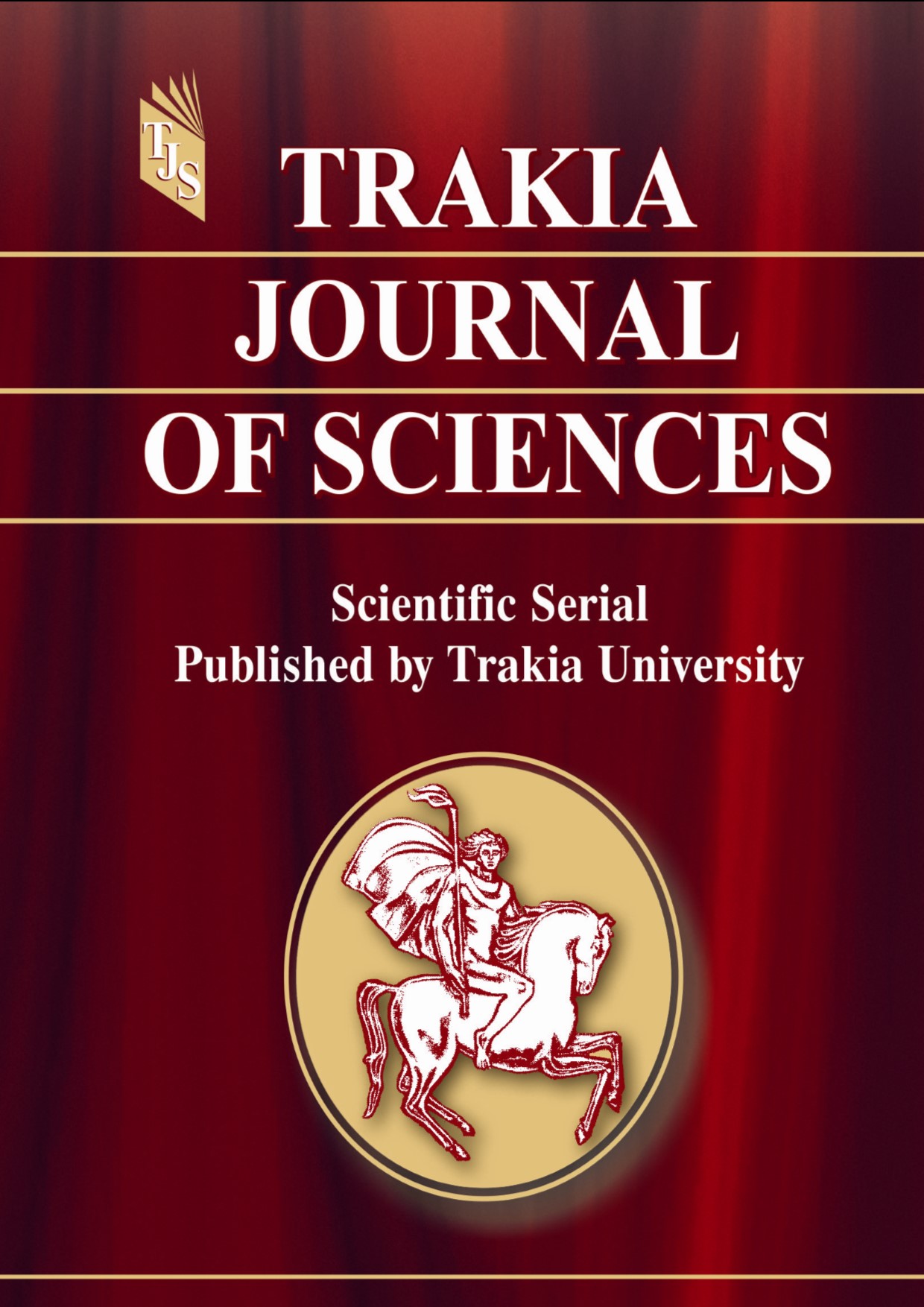TREATMENT OF TYPE 2 DIABETES MELLITUS WITH GLP-1 RECEPTOR AGONISTS, CHRONIC KIDNEY DISEASE AND INFLUENCE ON CARDIOVASCULAR RISK
DOI:
https://doi.org/10.15547/tjs.2025.s.01.004Keywords:
diabetes mellitus, glomerular filtration, microalbuminuria, GLP-1 receptor agonists, cardiovascular riskAbstract
Type 2 diabetes is a global problem with an increasing incidence. Globally, more than one in 10 adults are now living with diabetes. Late complications of diabetes mellitus represent a serious problem for patients. Diabetes mellitus is the most common cause of the development of chronic kidney disease (CKD).
Early identification and management of CKD is of utmost importance to minimize the risk of severe cardiovascular events and premature loss of life.
There are advances in available glucose-lowering agents for the treatment of type 2 diabetes that not only modify the disease itself, but also have important benefits in terms of associated cardiovascular risk factors.
The aim of the present study was to investigate the degree of influence of renal function-glomerular filtration and microalbuminuria, as factors increasing the incidence of cardiovascular risk, by using GLP-1 receptor agonists, in the treatment of type 2 diabetes mellitus.
In a total of 66 patients (100%) treated with GLP-1 receptor agonist - 26 men (39.4%) and 40 women (60.6%) serum creatinine was examined, GFR was calculated using the CKD-EPI (Equations for Glomerular Filtration RATE) method and microalbuminuria in the first morning urine. The difference between the mean values of glomerular filtration at the beginning of the study and after 6 months, which amounted to 5,780 ml/min. (0.043<α=0.05) (*p<0.05) is statistically significant. The difference between the mean values of microalbumin MALB at the beginning of the study and after 6 months amounted to -1.015 mg/l, with no statistical dependence (p≥0.05).
Given the additional protection they provide, GLP-1 receptor agonists should be considered as the mainstay in the treatment of DM type 2. The therapy of patients with DM2 should be complex and with a view beyond the glycemic effect, giving the opportunity to stop the development of chronic kidney disease and thus reduce the cardiovascular risk.
References
Zheng, Y., Ley, S. H. & Hu, F. B. Global aetiology and epidemiology of type 2 diabetes mellitus and its complications. Nat. Rev. Endocrinol. 14, 88 (2018).
Heerspink HJL, Stefánsson BV, Correa-Rotter R, et al, for the DAPA-CKD Trial Committees and Investigators. Dapagliflozin in patients with chronic kidney disease. N Engl J Med. 2020;383:1436-1446
United States Renal Data System . National Institutes of Health, National Institute of Diabetes and Digestive and Kidney Diseases; Bethesda, MD: 2018. 2018 USRDS annual data report: epidemiology of kidney disease in the United States. [Google Scholar]
Levey A.S., Eckardt K.U., Tsukamoto Y., et al. Definition and classification of chronic kidney disease: a position statement from kidney disease: improving global outcomes (KDIGO) Kidney Int. 2005;67(6):2089–2100. doi: 10.1111/j.1523-1755.2005.00365.x. [DOI] [PubMed] [Google Scholar]
Ninomiya T., Perkovic V., de Galan B.E., et al. Albuminuria and kidney function independently predict cardiovascular and renal outcomes in diabetes. J Am Soc Nephrol. 2009;20(8):1813–1821. doi: 10.1681/ASN.2008121270. [DOI] [PMC free article] [PubMed] [Google Scholar]
Fox C.S., Matsushita K., Woodward M., et al. Associations of kidney disease measures with mortality and end-stage renal disease in individuals with and without diabetes: a meta-analysis. Lancet. 2012;380(9854):1662–1673. doi: 10.1016/S0140-6736(12)61350-6. [DOI] [PMC free article] [PubMed] [Google Scholar]
GBD Chronic Kidney Disease Collaboration. Global, regional, and national burden of chronic kidney disease, 1990–2017: a systematic analysis for the global burden of disease study 2017. Lancet. 2020;395:709–33.
Tuttle KR, Bakris GL, Bilous RW, et al. Diabetic kidney disease: a report from an ADA consensus conference. Diabetes Care. 2014;37:2864–83.
Article PubMed PubMed Central Google Scholar
Jankowski J., Floege J., Fliser D., Bohm M., Marx N. Cardiovascular disease in chronic kidney disease: pathophysiological insights and therapeutic options. Circulation. 2021;143(11):1157–1172. doi: 10.1161/CIRCULATIONAHA.120.050686. [DOI] [PMC free article] [PubMed] [Google Scholar]
Almourani R, Chinnakotla B, Patel R, et al. Diabetes and cardiovascular disease: an update. Curr Diab Rep. 2019;19:161.Article CAS PubMed Google Scholar
Afkarian M., Sachs M.C., Kestenbaum B., et al. Kidney disease and increased mortality risk in type 2 diabetes. J Am Soc Nephrol. 2013;24(2):302–308. doi: 10.1681/ASN.2012070718. [DOI] [PMC free article] [PubMed] [Google Scholar
American Diabetes Association professional practice committee. 2. classification and diagnosis of diabetes: standards of medical care in diabetes-2022. Diabetes Care. 2022;45(Suppl 1):S17–38.
Ndumele, C. E. et al. Cardiovascular-Kidney-Metabolic Health: A Presidential Advisory From the American Heart Association. Circulation 148, 1606–1635 (2023).
Ndumele, C. E. et al. A Synopsis of the Evidence for the Science and Clinical Management of Cardiovascular-Kidney-Metabolic (CKM) Syndrome: A Scientific Statement From the American Heart Association. Circulation 148, 1636–1664 (2023).
Müller, T. D. et al. Glucagon-like peptide 1 (GLP-1). Mol. Metab. 30, 72–130 (2019).
Totomirova Ts., Arnaudova M., Application of GLP1 agonists in patients with chronic kidney disease and diabetes mellitus. Medinfo, 2021, 9, 50-54
Cai X, She M, Xu M, et al. GLP-1 treatment protects endothelial cells from oxidative stress-induced autophagy and endothelial dysfunction. Int J Biol Sci. 2018;14:1696–708.
Lee Y.S., Jun H.S. Anti-inflammatory effects of GLP-1-based therapies beyond glucose control. Mediators Inflamm. 2016;2016 doi: 10.1155/2016/3094642. [DOI] [PMC free article] [PubMed] [Google Scholar
Kidney disease: improving global outcomes diabetes work G. KDIGO 2022 clinical practice guideline for diabetes management in chronic kidney disease. Kidney Int. 2022;102(5S):S1–S127. doi: 10.1016/j.kint.2022.06.008. [DOI] [PubMed] [Google Scholar]
Michos E.D., Tuttle K.R. GLP-1 receptor agonists in diabetic kidney disease. Clin J Am Soc Nephrol. 2021;16(10):1578–1580. doi: 10.2215/CJN.18771220. [DOI] [PMC free article] [PubMed] [Google Scholar
Kidney Disease: Improving Global Outcomes CKD evaluation and management https://kdigo.org/guidelines/ckd-evaluation-and-management/, Accessed 14th Mar 2021 Google Scholar
National Clinical Guideline Centre (UK) Chronic kidney disease (partial update): early identification and management of chronic kidney disease in adults in primary and secondary care National Institute for Health and Care Excellence (UK), London (2014)
J.F. Moorhead, M. El-Nahas, M.K. Chan, Z. Varghese Lipid nephrotoxicity in chronic progressive glomerular and tubulo-interstitial disease Lancet, 320 (1982), pp. 1309-1311
Pashkunova S., Ivanov V., Savov A., A modern view of the pathogenesis of diabetic nephropathy, Topmedika, 1,47-50
C.E. Jackson, S.D. Solomon, H.C. Gerstein, et al. Albuminuria in chronic heart failure: prevalence and prognostic importance Lancet, 374 (2009), pp. 543-550
K. Damman, D.J. van Veldhuisen, G. Navis, A.A. Voors, H.L. Hillege Urinary neutrophil gelatinase associated lipocalin (NGAL), a marker of tubular damage, is increased in patients with chronic heart failure Eur J Heart Fail, 10 (2008), pp. 997-1000
Nayor M, Larson MG, Wang N, et al. The association of c hronic kidney disease and microalbuminuria with heart failure with preserved vs. reduced ejection fraction. Eur J Heart Fail. 2017;19:615-623.
Mann J.F., Yi Q.-L., Gerstein H.C.E., Mann Q.-L.Y.J.F. Albuminuria as a predictor of cardiovascular and renal outcomes in people with known atherosclerotic cardiovascular disease. Kidney Int. 2004
Wattanakit K., Folsom A.R., Criqui M.H., Kramer H.J., Cushman M., Shea S., Hirsch A.T. Albuminuria and peripheral arterial disease: Results from the Multi-Ethnic Study of Atherosclerosis (MESA) Atherosclerosis. 2008

Downloads
Published
Issue
Section
License

This work is licensed under a Creative Commons Attribution-NonCommercial 4.0 International License.


